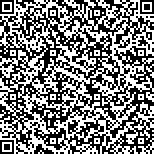下载中心
优秀审稿专家
优秀论文
相关链接
摘要

为抑制相干斑噪声对极化SAR图像分类结果的干扰,本文提出一种综合多特征的极化SAR图像随机森林分类方法。该方法首先利用简单线性迭代聚类(SLIC)算法生成超像素作为分类单元;然后,基于高维极化特征图像,利用训练好的随机森林模型,统计决策树的分类投票数,计算各超像素的类别概率;最后,利用超像素间的空间邻域特征,采用概率松弛算法(PLR)迭代修正超像素的类别后验概率,并依据最大后验概率(MAP)准则得到分类结果;实现综合利用超像素和空间邻域特征,降低相干斑噪声干扰的极化SAR图像分类方法。实验对比结果表明:本文方法能得有效抑制极化SAR图像中相干斑噪声的干扰,得到高精度且光滑连续的分类结果。
The classification technique plays an important role in the analysis of polarimetric synthetic aperture radar (PolSAR) images. PolSAR image classification is widely used in information extraction and scene interpretation or is performed as a preprocessing step for further applications. However, speckle noise appears in PolSAR images because of the coherent interference of waves reflected from elementary scatters. Such inherent speckle noise degrades the classification performance and brings difficulty for PolSAR image classification. Therefore, a novel supervised multi-feature-based classification method was proposed in this study.
This method combined polarimetric signature information and spatial context information based on the random forest model. First, a modified simple linear iterative clustering algorithm was utilized to generate superpixels as classification elements by using the Pauli RGB image, which helped reduce speckle noise interference. Second, a high-dimensional polarimetric SAR feature image was constructed by collecting various polarimetric signatures generated by polarimetric decomposition and algebra operations. Then, the random forest model was trained on the basis of the PolSAR feature image by using training samples, and the number of classification votes of each decision tree in the random forest for each pixel was counted to compute the class probabilities of the superpixels. Finally, a neighborhood function was defined to express the spatial relationship among adjacent superpixels quantitatively, and the class probabilities of the superpixels were recalculated by the predefined neighborhood function in a Probabilistic Label Relaxation (PLR) procedure to reduce the interference of speckle noise. The final classification result was obtained by the maximum a posteriori decision rule when the iteration of PLR was terminated.
Comparative experiments using different RADARSAT-2 images were conducted to evaluate the validity and applicability of the proposed method. The proposed approach achieved the highest accuracy (94.39% on the Flevoland RADARSAT-2 image and 85.09% on the Wuhan RADARSAT-2 image) and generated accurate and consistent classification results for the experimental images, which was considerably improved compared with those of other methods.
Therefore, the proposed method can effectively suppress the interference of speckle noise by using superpixels and spatial context information and obtain accurate and consistent classification results for PolSAR images.

